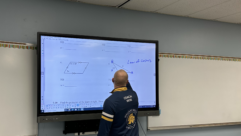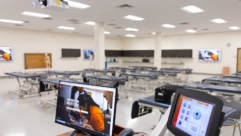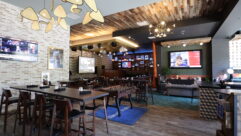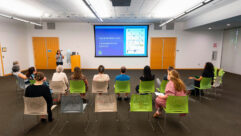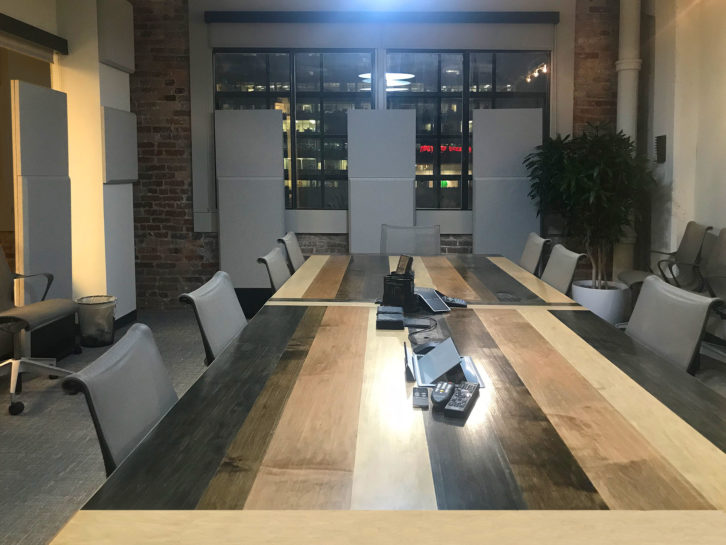
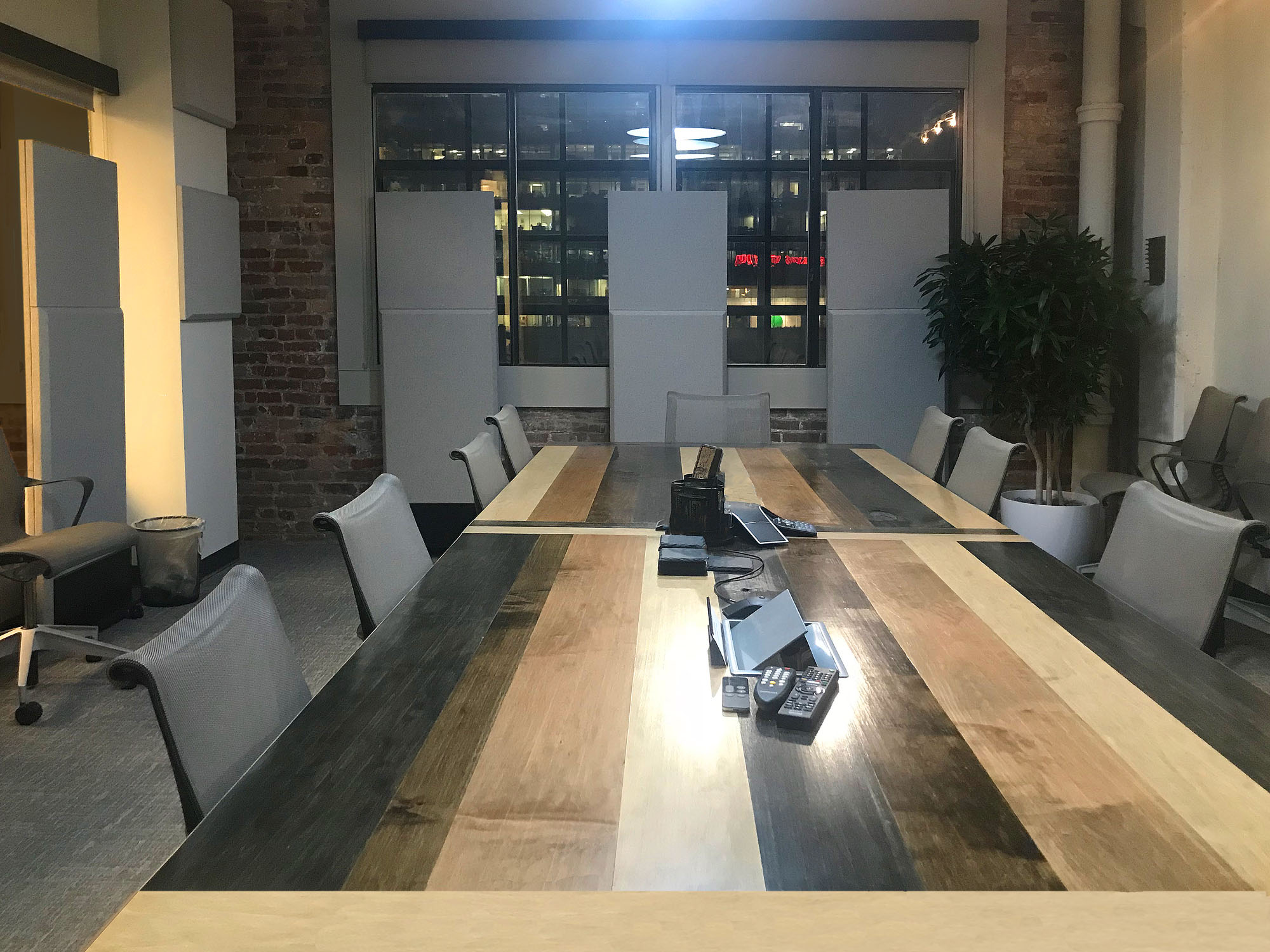
“Acoustics is an integral part of any environment; acoustics can make or break an AV installation,” says Scott Oliver, owner of Nashville-area-based Centerline Audio Visual. As a case in point, Centerline has recently addressed boardroom acoustics issues for Nashville-based Axial Healthcare.
Axial Healthcare, a company specializing in the field of pain management, is headquartered in Cummins Station, a renovated train station in downtown Nashville. While the technical infrastructure was in place in Axial’s facility for the conference calls that are key to their business model, the acoustics of the spaces led to problems with intelligibility. A referral from a Centerline client led Axial to approach Oliver, seeking a solution to those problems.
“At Axial, they have quite a few conference rooms,” says Oliver. “The problem is that there are all these hard surfaces – plaster walls and windows. There’s a tremendous amount of low-frequency buildup in the rooms. When they’d be on a conference call with a group of people around the conference table, the people on the other end couldn’t understand what they were saying because of the poor acoustics in the room. They had several people come in an attempt to do fixes, but the problem remained.”
“I did an impulse response test,” Oliver shares, “and confirmed that there were substantial low-frequency standing waves, even with one person talking. It was just horrible, especially if someone has a big voice. You could even hear your voice resonating off the top of the conference room table.”
One long wall of the conference room is a glass wall. The other long wall is completely given over to a dry erase board. Neither could be permanently covered. A large video monitor that also had to remain visible is fitted to one of the remaining walls for video conferencing.
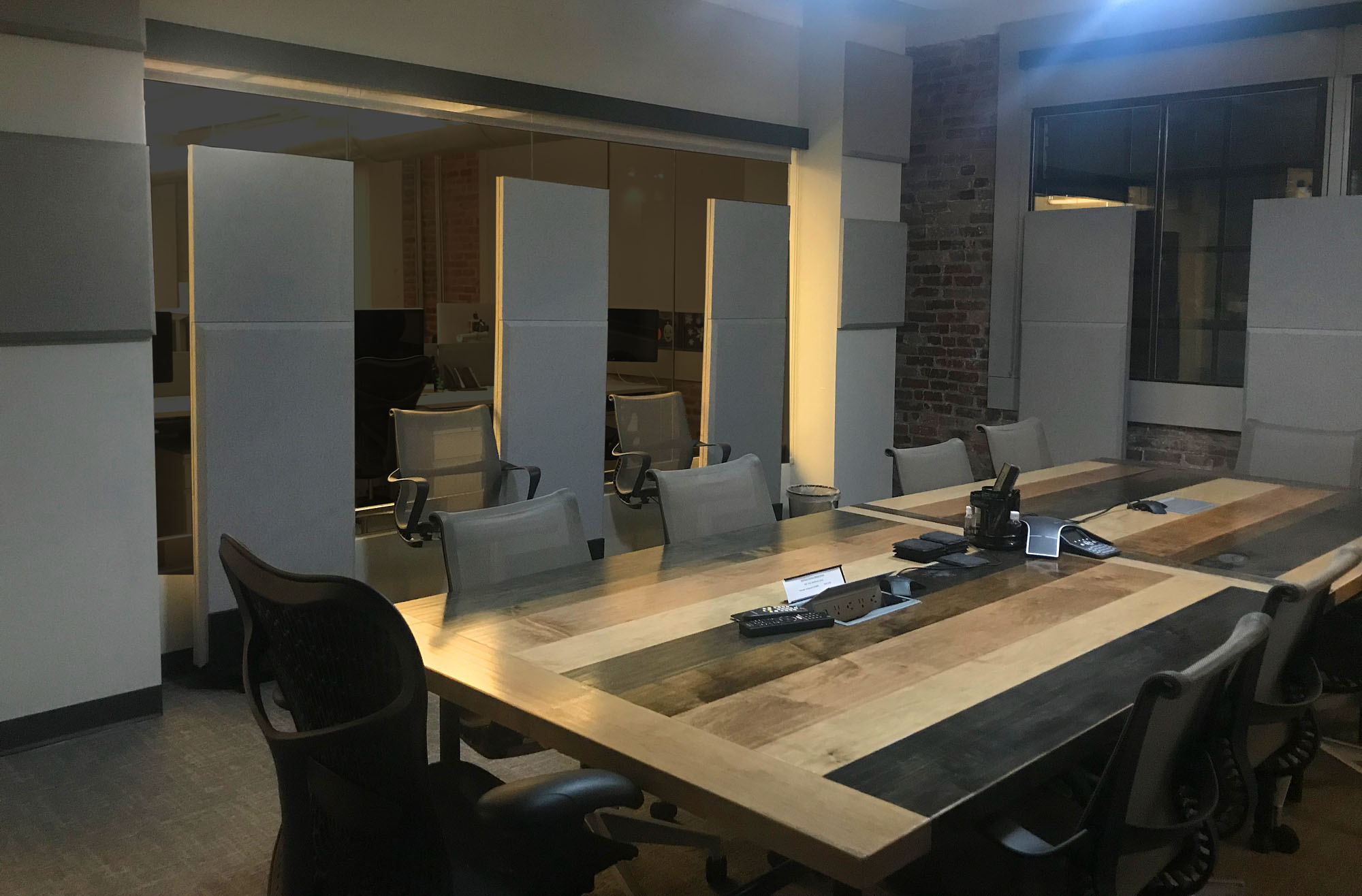
After constructing a room model for one of the primary conference rooms using EASE software, Oliver predicted the RT60 time for the room, as well as the related prediction of the percentage of articulation loss of consonants – %ALCONS – which typically is directly correlated to RT60 time. “Predictions are good to keep from doing the wrong thing, or from doing too much,” he says. While a general recommendation is that %ALCONS should never be more than 15%, “I disagree,” says Oliver. “I think they should never be above 10%. This room, before treatment, was 21%. That’s a lot of articulation loss. %ALCONS, when we were done, were maximum of 2.6%. That’s a marked difference.”
The solution included mounting 18 Auralex Acoustics ProPanel fabric-covered acoustic absorptive panels on room surfaces that allowed permanent installation – 14 two-foot x two-foot panels and four two-foot x four-foot panels. All the ProPanels are two-inches thick. Additionally, six two-foot x six-foot x four-inch Auralex ProGO stand-mounted portable absorbers on casters are used where a permanent installation was not possible. All the Auralex panels are surfaced with a premium fabric finish in the Petoskey color option.
“ProGOs are killer,” says Oliver. “They solve a lot of problems because you have absorption not only on the front but you also have it on the back.” The ProGOs can be moved when the room is used for other purposes.
John Donahue, Axial Healthcare Chairman and CEO, notes, “It is crucial to our corporate mission that we can communicate clearly to prospective clients during conference calls. In the past, sometimes voices have sounded distant or were overshadowed by background noise. With these Auralex panels, we’ve noticed a significant improvement in communication – for instance, we are asked to ‘repeat’ things much less on these calls – making meetings run more efficiently with less disruption. We also appreciate that the Auralex team made sure their sound solutions were visually consistent with the existing design of our conference rooms.


